Review: Airfix 1/48 Spitfire I
The Supermarine Spitfire is the most famous and recognizable British airplane ever built and as close to immortal as any airplane will ever get. The Spitfire I first appeared in RAF squadron service in the summer of 1938. Harder to construct than its stablemate, the Hawker Hurricane, Spitfires were only one-third of the RAF fighters that fought in the Battle of Britain, yet they are considered synonymous with that epic battle.
The Spitfire that fought the Battle of Britain was powered by a 980 h.p. Rolls-Royce Merlin engine, which could achieve slightly more than 1,000 h.p. when fueled with 100-octane avgas, which only became available in quantity shortly before the Battle of Britain. It was armed with eight .303-caliber Colt-Browning machine guns. Fortunately for the RAF, the Spitfire I was competitive with the German Bf-109E that opposed it in the battle with similar performance, unlike the slower Hurricane, which could not fly at the altitude the Messerschmitt operated at.
Bob Tuck, the first Spitfire ace:
Born July 1, 1916, at Catford, London, the second son of Stanley Lewis and Ethel Clara Tuck, Roland Robert Stanford Tuck left school in 1932 to became a cadet in the British Merchant Marine. During two years aboard the Lamport and Holt Line's refrigerator ship Marconi, Tuck became expert at shooting sharks swimming near the ship with an old Lee‑Enfield .303‑caliber rifle, often killing them with a single bullet. While home on leave in 1935, he saw an advertisement about the RAF and decided to apply for flight training.
Tuck was not at first a natural pilot, and came close to being “bowlered out” of the RAF, finally soloing and passing primary flight training with nearly 16 flying hours, nearly twice the average. Once he soloed successfully, he never looked back. He earned his pilot wings in August 1936 and was posted to No. 65 Squadron at Hornchurch, flying the Gloster Gladiator I biplane fighter. During the next two years he was with 65 Squadron, Tuck led in aerobatics, radio navigation, formation flying, interception and ground attack.
Tragedy struck on January 18, 1938, when Tuck and two other 65 Squadron pilots were practicing formation flying 3,000 feet over Sussex. Flying Officer Adrian Hope‑Boyd was in the lead, with Flight Sgt. Geoffrey Gaskell second and Tuck last, flying slightly higher and to the right of Gaskell's plane to stay out of his slipstream, when suddenly the Gladiators hit turbulence. Gaskell's Gladiator veered left and was caught by Hope‑Boyd's slipstream which threw it into a steep right bank, rearing up in front of Tuck, who slammed his stick forward to avoid a collision. His Gladiator struck Gaskell's, the propeller slicing into Gaskell's cockpit and killing him. Tuck's wings crumpled, and the Gladiator plunged toward the ground. Tuck tried to slide the canopy open, but it was stuck. A moment later the wings broke loose, taking the canopy with them. Tuck got out and deployed his parachute. Only then did he notice his right cheek had been slashed by a razor‑sharp piece of wire. He lost blood from the wound and twisted his ankle on landing.
After a six-day stay in hospital, a court of inquiry absolved him of blame and he was flying again nine days later. The incident changed his flying style. While his nerve remained steady, his judgment good and his enthusiasm high, he no longer took needless risks while flying. As his biographer Larry Forrester wrote, “He knew that only luck–not skill, not daring–had saved him, and he had learned that in military flying there were unpredictable factors that killed the best and the worst pilots with terrible impartiality.”
In December 1938, Tuck was sent to Duxford to be checked out in the new Spitfire fighter, returning to Hornchurch on January 9 to supervise the transition of 65 Squadron to their new mount. He remained with 65 through the months of the “Phoney War,” until he was transferred to 92 Squadron on May 2, commanded by Roger Bushell and based at Croydon, as Flight Lieutenant.
On May 23, 1940, Bob Tuck and the Spitfire finally saw combat. 92 Squadron joined 54, 65 and 74 squadrons at Hornchurch to fly patrols over Dunkirk. The BEF was being evacuated, and the Luftwaffe was attacking in force. At 1030 hours, 92 Squadron took off to patrol off Dunkirk in the first Spitfire offensive mission of the war/ Tuck flew Spitfire I N3249 coded GR-P in a V-of-V formation so tight he could see the two pilots near him give a V‑for‑Victory salute. Moments after the squadron arrived on station, the Spitfires were attacked from above and behind by Bf‑109Es. The squadron broke formation, and Tuck latched onto a 109. He opened fire at 500 yards, striking the enemy's right wing. The 109 stalled, rolled to its left and spiraled down. Tuck followed it down through the clouds and watched it slam into a field near St. Omer, France. Feeling “quietly satisfied” with his first kill, Tuck returned to Hornchurch.
92 flew a second patrol over Dunkirk that afternoon, where they found and attacked thirty twin‑engine Bf‑110C fighters. Tuck shot down one, then went after a second that nearly collided with him. A low-altitude chase ensued, pursuer and pursued skimming over roofs and treetops. At one point, Tuck chased the Messerschmitt beneath some electrical wires. When he pulled up to avoid the wires, he exposed his airplane's belly to the tail gunner, who fired a few rounds into the Spitfire. Tuck dropped his nose, caught up with the Me‑110 and riddled the gunner. The pilot crash‑landed in an empty field before Tuck could fire again. Tuck circled the wrecked airplane as the German pilot climbed out. He slid his canopy open and waved at the downed opponent, who fired back with a pistol, narrowly missing Tuck's head. Angered, he swung around and killed the German with a burst from his eight Brownings, then headed home.
In his first day of combat, Bob Tuck had shot down three enemy fighters, while 92 Squadron claimed 20 aircraft shot down for the loss of five pilots, including Squadron Leader Bushell. As the next senior officer, Tuck assumed temporary command of 92 Squadron.
On May 24, Tuck led 92 Squadron on patrol near Dunkirk. Rather than flying an “official” formation, he opened up the formation until the Spitfires were 200 feet apart. “I had decided that our rigid flying tactics with formations and that sort of thing were almost useless in mixed combat with the more experienced Messerschmitt 109 pilots,” he later recalled. Shortly after arriving over the beaches, Tuck spotted 20 Dornier Do‑17Z bombers, escorted by Bf‑110 fighters. While a Hurricane squadron took on the 110s, 92 attacked the bombers. Tuck opened fire on one Do-17 at a range of 400 yards, striking its port wing and fuselage. The bomber dropped out of formation and he went after it, but was hit in the right thigh before he could fire. Ignoring his wound, Tuck closed on the stricken bomber and set it afire with another burst, then watched two of the crew bail out. He rejoined the attack on the remaining bombers and downed a second Do-17, bringing his score to five in less than 24 hours to become the first Spitfire ace.
Low on fuel and ammunition, Tuck headed back to Hornchurch, where his wound was treated by the medical officer, who removed a small duraluminum nut that had been knocked off his Spitfire by a German machine‑gun bullet. Tuck kept it, along with a bent penny, for good luck.
Tuck led the squadron over Dunkirk again the next day, where he shared a half credit for a Do‑17 with his flight commander, Brian Kingcome. 92 returned to Duxford that night for rest and maintenance, ending its part in the Battle over Dunkirk. On June 2, Tuck led 92 back over Dunkirk where they spotted eight Heinkel He‑111s, downing one and one of their Bf-109 escorts.
Two weeks later, Tuck was sent to Farnborough with Wing Commander George Stainforth, to participate in comparative trials of a captured Bf‑109E and a Spitfire II. Stainforth first flew the 109 with Tuck in the Spitfire as they went through level flight, dives and turns at various speeds at different altitudes. Halfway through, the two switched planes. Tuck found the Bf‑109 was “without a doubt a most delightful little airplane – not as maneuverable as the Spit - but certainly it was slightly faster, and altogether it had a wonderful performance.” Tuck returned from the Farnborough with the ability to put himself in the enemy's cockpit. Learning how his opponents' hands worked the controls, he knew how to beat the Messerschmitt.
At a ceremony at Hornchurch on June 28, 1940, Tuck was awarded the Distinguished Flying Cross by King George VI for his “initiative and personal example” over Dunkirk.
92 Squadron was assigned to 11 Group as the Battle of Britain began. Tuck shot down a Junkers Ju‑88A bomber on August 13 and two more 88s on August 14. Visiting friends at Northolt airfield northeast of London on August 18 when the Luftwaffe launched a major attack on RAF airfields, Tuck took off and found two Ju‑88s heading back to France at sea level. He chased them out to sea before shooting one down, then attacked the second head‑on. He narrowly avoided a collision, but his Spitfire was hit in the oil and glycol coolant tanks, and half the propeller was shot away. Tuck managed to nurse the ailing Spitfire back over the coast before its engine seized and caught fire, forcing him to bail out. “I just grabbed one side with both hands, hauled myself up and over, and pitched out, head first. As soon as I knew my feet were clear I pulled the ripcord. It seemed to open almost immediately.” He was barely 500 feet above ground when he bailed out, and his parachute had just opened when he landed, wrenching his leg. He had landed on the estate of Lord Cornwallis at Hornsmonden, Kent, and His Lordship invited Tuck to have tea with the family before he returned to his squadron.
On August 25, Tuck was on patrol with two others when ground control alerted them to a ship under attack in the Bristol Channel. When they arrived overhead, Tuck spotted a Do‑215 bomber and attacked. Before he could open fire, the rear gunner raked his Spitfire. Tuck broke off his attack and headed for shore with his engine off, gliding 15 miles before crash landing and ending up against a stone wall. It was his last mission with 92 Squadron.
On September 11, Tuck was given command of 257 Squadron, stationed at Martlesham, flying Hawker Hurricanes. When he arrived at his new command, he found the squadron's personnel demoralized, having suffered heavy casualties in July and August 1940 with few air victories to compensate for its losses. Tuck, who had over 1,000 hours in Spitfires, took his first flight in a Hurricane early the next morning. “My first impression wasn't very good. After the Spit, it was like a flying brick – a great, lumbering farmyard stallion compared with a dainty and gentle thoroughbred. It nearly broke my heart, because things seemed tough enough without having to take on 109s in a heavy great kite like this.”
Tuck intensively drilled his pilots for three days, teaching them first to fly in loose pairs. He had thought it would take a week to 10 days to get 257 ready for combat, but by the second day, he found the pilots “clicking into position quickly, keeping better lookout and–best of all – generally displaying a bit of dash and initiative in the mock dogfights.” By September 14, he informed 11 Group that 257 would be ready for action in three or four more days.
The Battle of Britain was reaching its climax, and Fighter Command needed every squadron without delay. Early the next morning, September 15, 1940, Tuck led 257 to Debden, where they joined two other Hurricane squadrons, 17 and 73, in a wing under Tuck's command. They flew three patrols that morning without sighting any Germans. Early that afternoon, the three squadrons were scrambled to intercept bombers approaching London. Tuck soon sighted the raiding force above them – 50 He‑111 and Ju‑88 bombers plus two squadrons of Bf-109 and Bf‑110 fighters. With no time to gain altitude or get the sun behind them, the Hurricanes had no choice but to attack from below, even though they were vulnerable to attack from above by the escorting Messerschmitts. Tuck led the fighters in a climb toward the bombers. He and seven others pulled away, not waiting for the stragglers. Escorting 109s dove through the close‑packed bomber formation and went after the Hurricanes. Tuck ignored the 109s, lining up a Ju‑88, but had to break off as a 09 fired at him. Evading, he saw several Bf‑110s turning on the rest of his Hurricanes as they closed on the bombers. He picked out one 110 and shot it down, forcing the rest to break formation. He swung back toward the bombers and attacked an He‑111 that had broken away from the others. Before he could fire, a 109 dove on him. Tuck sent his wingman after the 109 and attacked another that followed the first, damaging it with a burst. The rest of the Hurricanes then got among the bombers and broke up the attack.
On October 25, Tuck was awarded a bar to his DFC for this action. His daring, luck and willingness to fight the Germans at any odds made him famous in the RAF. “In the face of constant death,” the London Times wrote, :he preserved a lightness of heart which was not simply bravura, but was allied to precise and ruthlessly applied technical skill.”
In 1981, six years before his death, I had the privilege of meeting Robert R. Stanford Tuck. Unlike Douglas Bader and Johnny Johnson, who both displayed that English condescension toward “the colonials” that drives Americans up the wall, Bob Tuck was the kind of Englishman who makes Anglophiles of Americans, with a quick self-deprecating wit and an open manner toward all he met. I consider him one of the best of the great aces I have met over the years, as a human being. It was easy to see why men would respond as they had to his leadership and personality. I renewed that meeting in 1984 at the best AFAA convention I ever attended, where I saw him with his good friend Adolf Galland, who also lived up to my expectations.
Airfix released a 1/48 Spitfire I just after Hornby took over the company several years ago. This was the final product of “old Airfix,” the company run by the bean-counters, and as such was a mishmash of possibilities: the fuselage, cockpit, horizontal stabilizers and landing gear was from the Spitfire Vb first released 35 years earlier, while the wing and prop were new. It was very much in the tradition of the earlier Seafire III release. This new kit has nothing to do with that kit other than it is a Spitfire I.
The new kit is in the tradition founded by the release of the Spitfire Vb last year. It is thoroughly “new Airfix,” with a choice of early, middle or late canopies and windscreens, a detailed cockpit, choice of propellers - two-bladed Watts fixed-pitch prop, three-bladed deHavilland two-position prop, or Rotol constant-speed. This latter is more appropriate to the Spitfire II, and a quick review of the “unused” parts in the box reveals that it is entirely possible to create s Spitfire II, the first time this has been possible OOB. All control surfaces are separate and positionable, and the gun bays can be opened to expose the eight Colt-Browning machine guns as is the case with the new Hurricane kit. Decals are provided for a pre-war Spitfire in 19 Squadron at the time of the Munich Crisis in 1938, a 1940 Battle of Britain veteran, and an advanced trainer from 1941. The decals are by Cartograf and include full stenciling.
I've said it before, I'll say it again here, and will likely keep on saying it. The new Airfix instruction sheets are the most modeler-friendly instruction sheets ever created. The construction process outlined is logical, and if one commits the revolutionary act of following them, an easy build and a good-looking model are the guaranteed result.
After painting and detailing the cockpit parts, I proceeded to assemble the wing while all that was setting up. I chose to keep the wings closed up, which avoided a lot of work to open the gun bays and clean them up. I then assembled the cockpit and installed it in the fuselage, which I glued together. I then attached the gas tank section appropriate to the windscreen I was using. This is the one “fiddly” part of the construction. Take your time test-fitting here, sand down as necessary to get a smooth fit, then glue it in position. The wing sub-assembly attaches to the fuselage sub-assembly without trouble, then attach the horizontal stabilizers, position the elevator, and attach the rudder.
Tuck's Spitfire I was in the “B” camouflage scheme. After painting the black/white undersurfaces, I used Mal Mayfield's Magic Mask for the camouflage after I applied the Dark Earth. This is an “A” scheme mask, which means you will have to use some Tamiya tape to attach it in position sticky-side up. With carful application of the RAF Dark Green, followed quickly by cleanup of the masks with water, the integrity of the masks was preserved for future use. I followed all this with a coat of Future.
Victory Decals “Spitfire: Aces of the Empire” was used to do Tuck's N3249, the Spitfire in which he became the first Spitfire ace on May 23-24, 1940. These are the best Spitfire decals available (Caveat Emptor: I helped create this sheet back in 2002), and provide the modeler with a full range of wartime Spitfires in interesting markings. I also used the kit decals for the stencils and other markings.
I gave the model an overall coat of Xtracrylix Flat Varnish, then unmasked the clear parts and mounted the flat-sided canopy in the open position. I attached the prop and landing gear. I finished off by applying “powder residue” on the wings as the airplane would have looked on its return on May 24, 1940. Other than that, I didn't give the airplane any dings since it was relatively new and had been well cared-for before its missions over Dunkirk.
This kit is The. Best. Spitfire I. In. Any. Scale. The kit is easy to assemble and any modeler can create a model they will be proud to display. At the relatively-inexpensive price you can certainly do more than one if you're a Spitaholic. Highly recommended. Airfix is back!

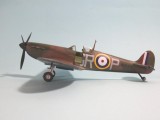
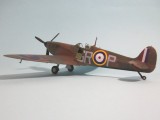
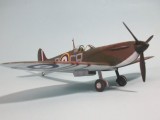
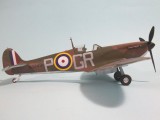
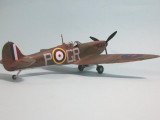
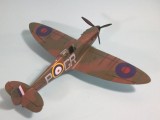

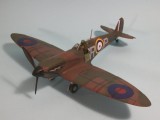
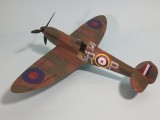
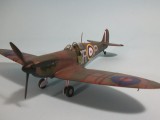

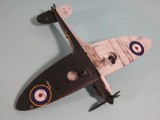
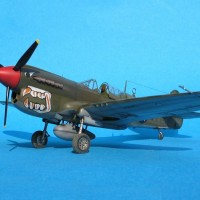
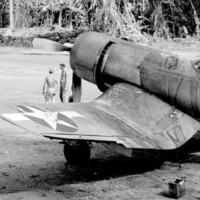
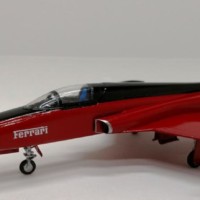
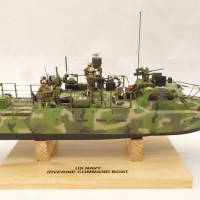
: ) ... Greetings ... : ) :
I love it, that is a very fine model and work. The weathering is not heavy and not over done. Just looking at it makes me wish I had my Stanford Tuck Hawker Hurricane, it was in 1/32 scale by REVELL . I am still looking around to get one, I still want the old REVELL type for sentimental reasons.
I was always a little dubious about the AIRFIX brand for their past quality. If you can, can you tell me how you consider it on your personal view.
Great work on that SPITFIRE, seeing it makes one wander and kind of imagine those times. Thank you for the images.
Past quality became poor, when the designers were forced by the bean-counters to deliver everything "for a price" (bean counters knowing "the price of everything and the value of nothing" as they say), which lowered quality after they had made a comeback with the EE Lightning kits and Spitfire 22/24-Seafire 46/47 kits in the early 90s. Now that they have been bought by Hornby, quality of product has been returned to its proper place of Most Important, and the new kits in all scales are really marvelous. They're not Eduard-fiddly or Tamiya-Hasegawa expensive, the average modeler can achieve real success doing them. Airfix is back to being what they used to be.
Good job ! I have a couple of the Airfix new tooling kits in 1/72 which are interesting. They'll end up as articles at some point.
I love the Spitfire, very nice build Tom, great pictures too.
Another neat Mini bio or a deceit magazine article in webzine site. Neat photos and decals. A American pilot describe the difference between a American fighter vs a Spitfire...you step into a American fighter. A Spitfire you put on.
No joy in my neck of the woods when it comes to my local LHS having them .
Two Thumbs up on this build and the decals.
OK !, in my best British accent, may I say "that's a splendid spit, ol boy".
Very sell done Tom. I'm sure I'm not the only one who's noticed we display a lot of them here, and I think that's just fine.
These new Airfix kits have proved very popular indeed. I see a lot of them at shows, in various liveries. I think Airfix should be congratulated for the effort they've made with this kit.
I don't model 1/48 myself, but the refinement and accuracy of detail is undeniable to any modeller. When I've seen these aircraft and early Bf109s in museums here, I'm always amazed at just how small they are. As you mentioned, though, in spite of their size, these aircraft cast a long shadow.
I like it Tom; as DE4EVER noted, it's not overly weathered, looks just right. Did you take pics of the cockpit before you sealed the fuselage?
Nice work, great narrative history too!
Nice build. Like it very much. Well done as usual!
The story behind the machine and the man is awesome and inspiring.
Tom, I'm not doubting your modelling skills, although your photographs are still a bit blurry, but don't you feel guilty about copying all this info about the pilots and the history of the aircraft?
Do you see a "by" line, George?
Obviously he doesn't, nor should he. What a strange and unnecessary comment...
That response was to the original comment, not to Tom. The long background is very much appreciated (apparently except for one person).
Like!
Looks very good, Airfix sure are coming at us! Long may it continue. Bob Tuck was my boyhood hero, would have loved to have met him. Great story in Larry Forresters superb Tuck autobiography, of when one evening Tuck and his future wife Joyce were driving along a pretty English country road to a pub, when Tuck heard the distinctive unsynchronised drone of a German bomber approaching. He stopped the car, got out onto the road and soon almost overhead a Heinkel III broke out of the overcast and flew on. Shortly after Tuck was amazed to hear the roar of an approaching Merlin, almost in the same place a Hurricane broke cloud, being radar vectored onto the Heinkel he could see the pilot's head turning as he looked for the Heinkel, and recognized the code letters on the fuselage as one from his squadron! But the pilot went the wrong way, Joyce watched as Tuck went crazy in the road, screaming up at the Hurricane, "That way, that way"! What a great scene!